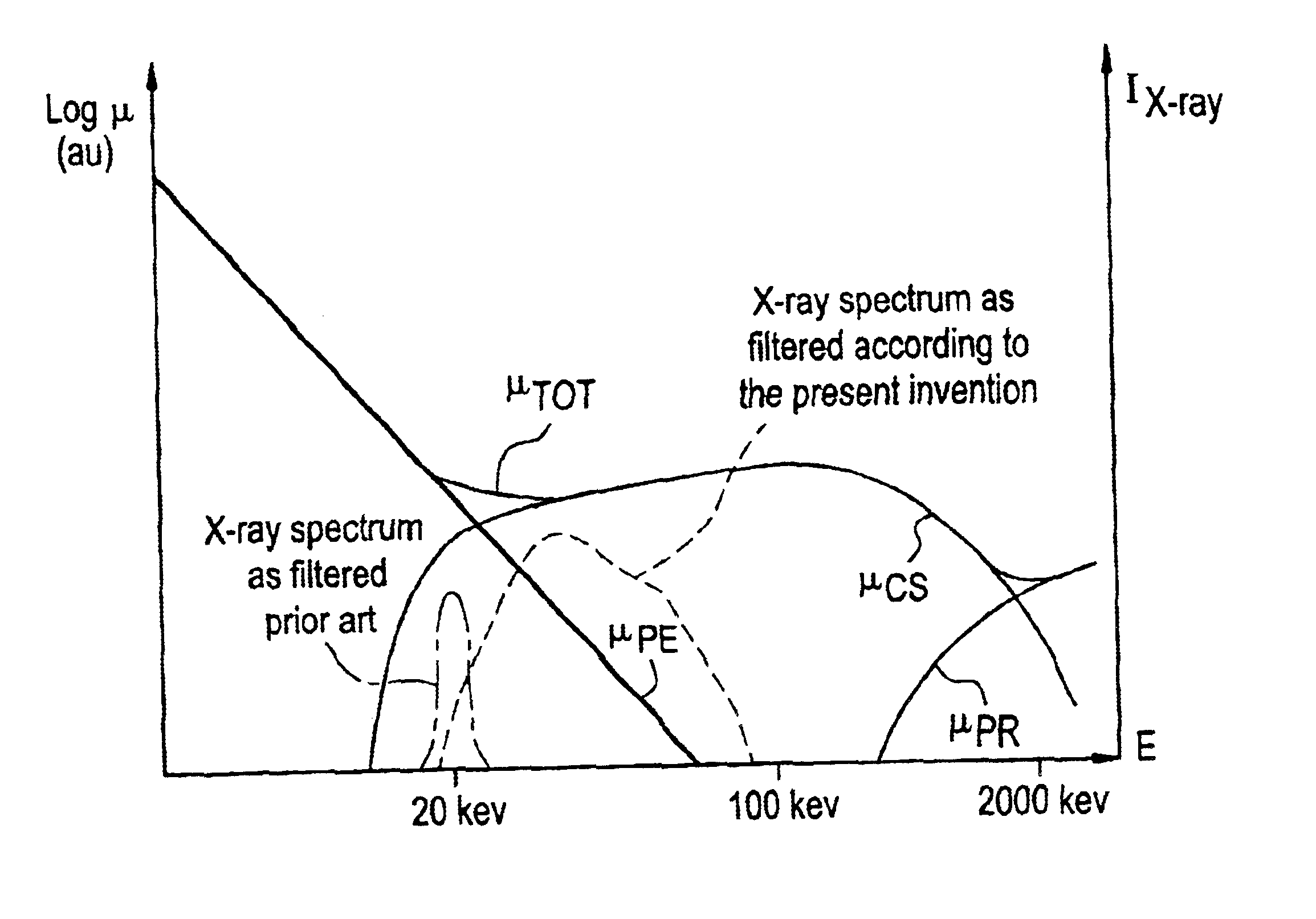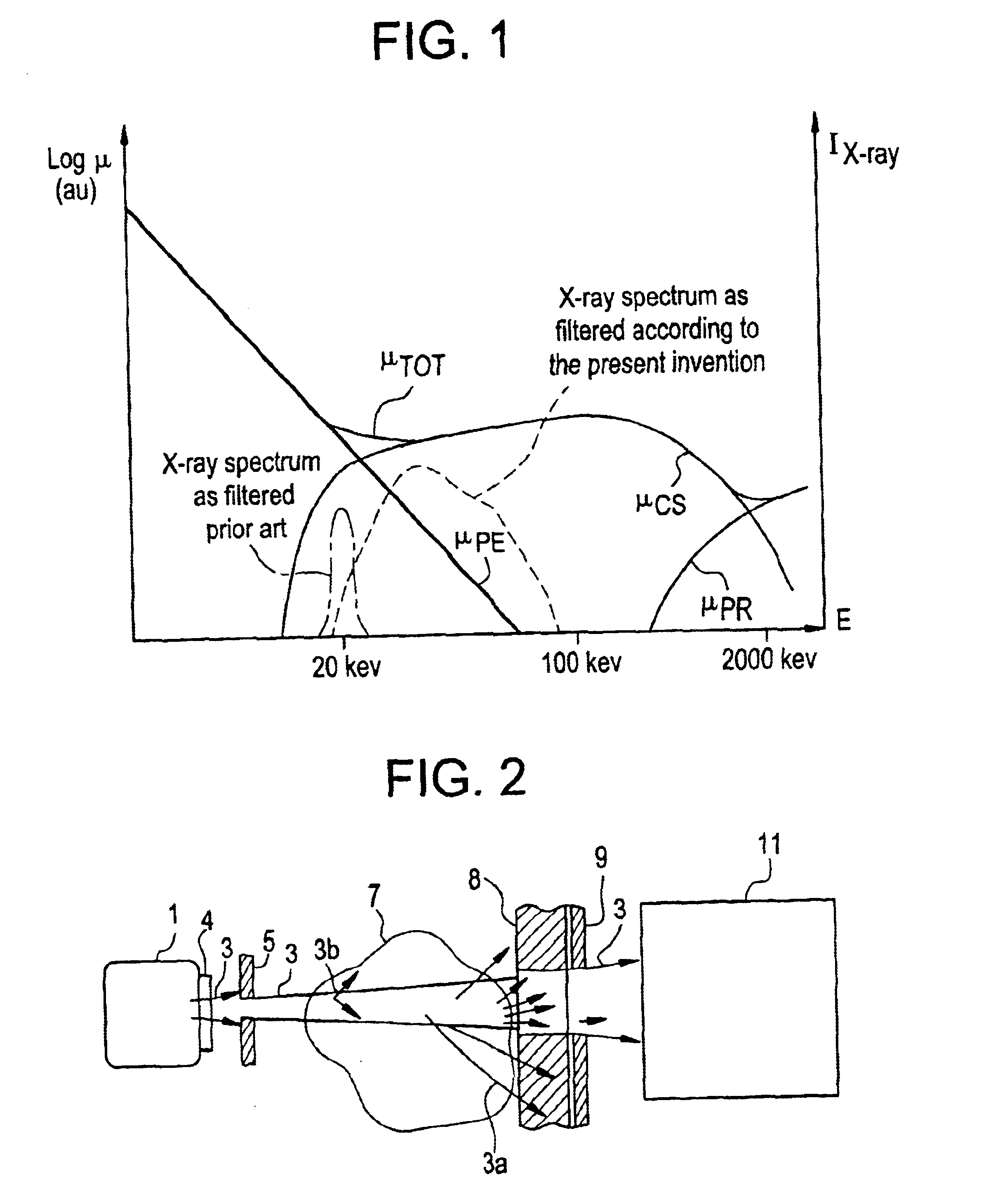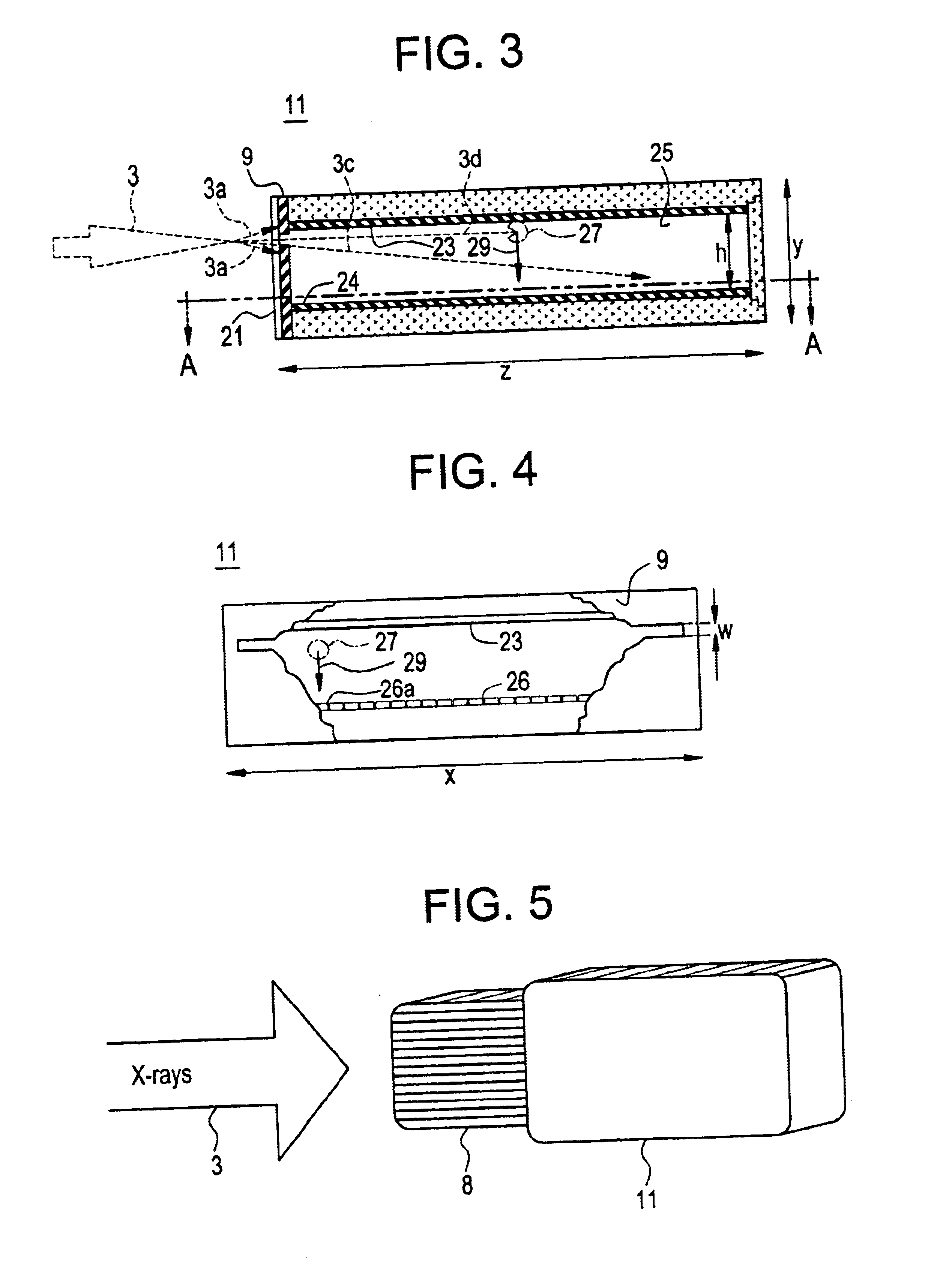Method and apparatus for detection of ionizing radiation
a technology of ionizing radiation and apparatus, which is applied in the field of method and apparatus for detection of ionizing radiation, can solve the problems of limiting the applicability of techniques, low efficiency of x-ray tubes at such low photon energy, and low number of x-rays per unit power supplied to the tubes, so as to reduce the load on the x-ray tubes, reduce exposure time, and increase the efficiency of x-ray tubes
- Summary
- Abstract
- Description
- Claims
- Application Information
AI Technical Summary
Benefits of technology
Problems solved by technology
Method used
Image
Examples
Embodiment Construction
As can be seen in FIG. 1, which is a schematic diagram illustrating photoelectric absorption, Compton scattering, pair production and total attenuation coefficient μPE, μCS, μPR, μTOT, for human soft tissue as a function of X-ray photon energy E, the photoelectric attenuation coefficient μPE decreases as a power law with photon energy, and at about 25 keV the Compton scattering attenuation coefficient μCS is comparable with the photoelectric absorption attenuation coefficient μPE. Between about 30 and several hundred keV the Compton scattering attenuation coefficient μCS is completely dominating, whereas at higher photon energies (in the order of 1 MeV) the probability for pair production is increasing rapidly, and becomes the dominating interaction process. Further, it is noted that the Compton scattering attenuation coefficient μCS is almost constant between photon energies about 30 and several hundred keV. While FIG. 1 is illustrating an example only for human soft tissue, the re...
PUM
| Property | Measurement | Unit |
|---|---|---|
| distance | aaaaa | aaaaa |
| distance | aaaaa | aaaaa |
| distance | aaaaa | aaaaa |
Abstract
Description
Claims
Application Information
 Login to View More
Login to View More - R&D
- Intellectual Property
- Life Sciences
- Materials
- Tech Scout
- Unparalleled Data Quality
- Higher Quality Content
- 60% Fewer Hallucinations
Browse by: Latest US Patents, China's latest patents, Technical Efficacy Thesaurus, Application Domain, Technology Topic, Popular Technical Reports.
© 2025 PatSnap. All rights reserved.Legal|Privacy policy|Modern Slavery Act Transparency Statement|Sitemap|About US| Contact US: help@patsnap.com



